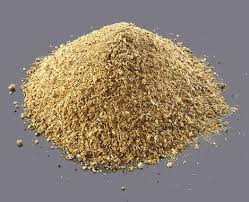Nail Production in Nigeria; The Feasibility Report.

A nail consists of a metal rod or shank, pointed at one end and usually having a formed head at the other, that can be hammered into pieces of wood or other materials to fasten them together. A nail is usually made of steel, although it can be made of aluminum, brass, or many other metals. The surface can be coated or plated to improve its corrosion resistance, gripping strength, or decorative appearance. The head, shank, and point may have several shapes based on the intended function of the nail.
Of the nearly 300 types of nails, most are used in residential housing construction. The average wood frame house uses between 20,000 and 30,000 nails of various types and sizes.
Nails are important items in building construction, carpentry and wood joinery. It is therefore reasonable to assume that the growth in the construction industry. carpentry and wood joinery generate high demand for nails. The shortage of supply from existing industries and the importation of the products call for a urgent need to set up of more nail factory.
Due to lack of local raw materials, Nigeria imports foreign made nails from developed countries like china, Canada and the United State of America which has resulted in a huge amount of foreign exchange loss to the Nigerian economy and less trust in made in Nigeria nails.
There is no data on the supply and demand of nail in Nigeria but like we have already stated, the demand is dependent on the growth of the construction industry and based a deficit of 16,000,000 in housing supply, it is fair to say that Nigeria has a large, growing and sustainable market for nail.
This feasibility report seeks to examine the financial viability or otherwise of establishing a wire nail production plant in Nigeria using low carbon steel wire as the raw material.
The line to make wire nails comprises of the wire drawing machine, wire nail making machines and nail polishing machines.
The output of the machine is a function of the capacity as well as the diameter and length of the product to be produced. Because of the different thickness of the product that can be produced, we have used 2 ½ inch as the reference size in the report.
The plant would produce three hundred and thirty pieces of 2 ½ inches of wire nail per minute (320 pcs/min) requiring 1,000 kg of low carbon steel wire to produce 970 kg of wire nails inclusive of 2% wastage and 280 pcs of 2 ½ inches of wire nail weighing 1 kg.
The plant would operate at eighty percent (80%) of the installed capacity for double (2) shifts of eight (8) hours each in the first, second, third, fourth and fifth year of operations respectively and producing twelve million, two hundred and eighty-eight thousand (12,288,000) pcs of 2 ½ inches of wire nails bi-monthly.
Table of Contents
EXECUTIVE SUMMARY 1.0 Business Overview 1.1 Description of the Business 1.2 Vision and Mission Statement 1.3 Business Objective 1.4 Value Proposition 1.5 Critical Success Factor of the Business 1.6 Current Status of Business 1.7 Description of the Business Industry 1.8 Contribution to Local and National Economy 2. Marketing Plan 2.1 Description of product 2.2 Product Packaging and delivery 2.3 The Opportunity 2.4 Pricing Strategy 2.5 Target Market 2.6 Distribution and Delivery Strategy 2.7 Promotional Strategy 2.8 Competition 3. Production Plan 3.1 Description of the Location 3.2 Raw Materials 3.3 Production Equipment 3.4 Production Process 3.5 Production Cost 3.6 Stock Control Process 3.7 Pre-Operating activities and expenses 3.7.1 Operating Activities and Expenses 3.8 Project Implementation Schedule 4.0 Organizational and Management Plan 4.1 Ownership of the business 4.2 Profile of the promoters 4.3 Key Management Staff 4.3.2 Management Support Units 4.4 Details of salary schedule 5. Financial Plan 5.1 Financial Assumption 5.2 Start Up Capital Estimation 5.3 Source of Capital 5.4 Security of Loan 5.5 Loan Repayment Plan 5.6 Profit and Loss Analysis 5.7 Cash flow Analysis 5.8 Viability Analysis 6.0 Business Risk and mitigation factor 6.1 Business Risks 6.2 SWOT Analysis
Project Specification:
Additional Info
Get this Report
Direct bank transfer
To order the report, Please do pay the sum of ₦150,000 into
Account Name : Foraminifera Market Research Ltd
Account Number : 274 20 569 37
Account Name : Foraminifera Market Research Ltd
Account Number : 101 76 603 95
Account Name : Foraminifera Ventures
Account Number : 011 66 066 32
Make your payment directly into our bank account. Please use your Order ID as the payment reference. Your order will not be shipped until the funds have cleared in our account.
Instructions
After payment call us on 01 -29 52 413 / 08033782777 or email us at foraminiferamarketresearch@yahoo.com with the payment details. After payment confirmation, the soft copy of the report would be sent to you within 24 hours.



